Aerospace Tech from CES 2020
January 09, 2020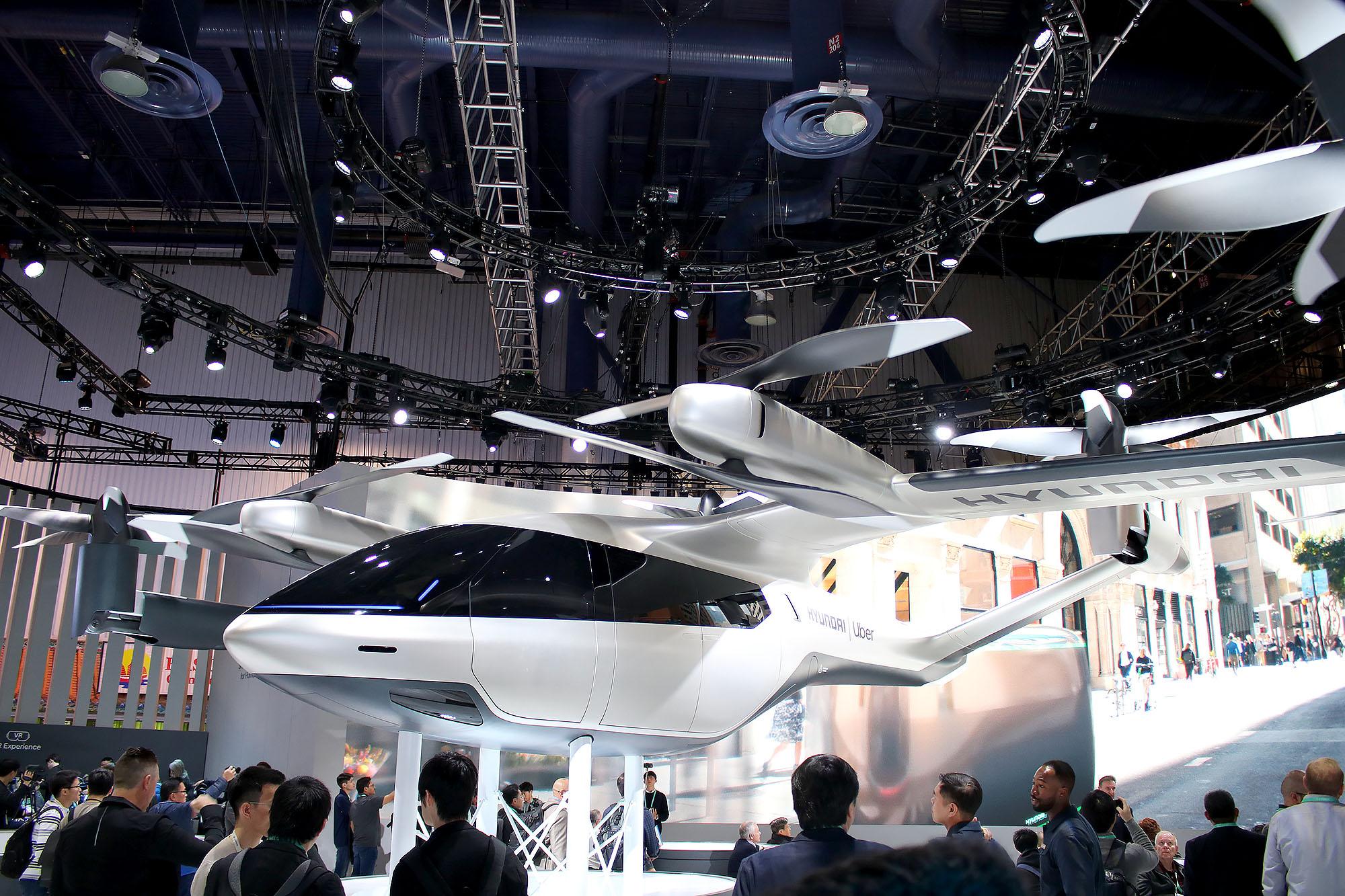
Hyundai S-A1 eVTOL
Credit: Lindsay Bjerregaard/Aviation Week
Making waves at CES this year was Hyundai’s new eVTOL “personal air vehicle,” called the S-A1. Electrically powered via multiple rotors and propellers, the S-A1 has been designed with a range of up to 60 mi. and the capacity to carry up to four passengers at a time. According to Jaiwon Shin, Hyundai’s head of urban air mobility (UAM), the automaker’s vision is to enable people to “fly on-demand rather than fitting their lives around an airline’s schedule.” In that vein, the OEM announced a partnership with Uber to provide an urban air mobility ridesharing service. Although the S-A1 is still just a concept, Shin says Hyundai will have an advantage over other UAM OEMs thanks to its automotive experience in terms of building large fleets affordably.
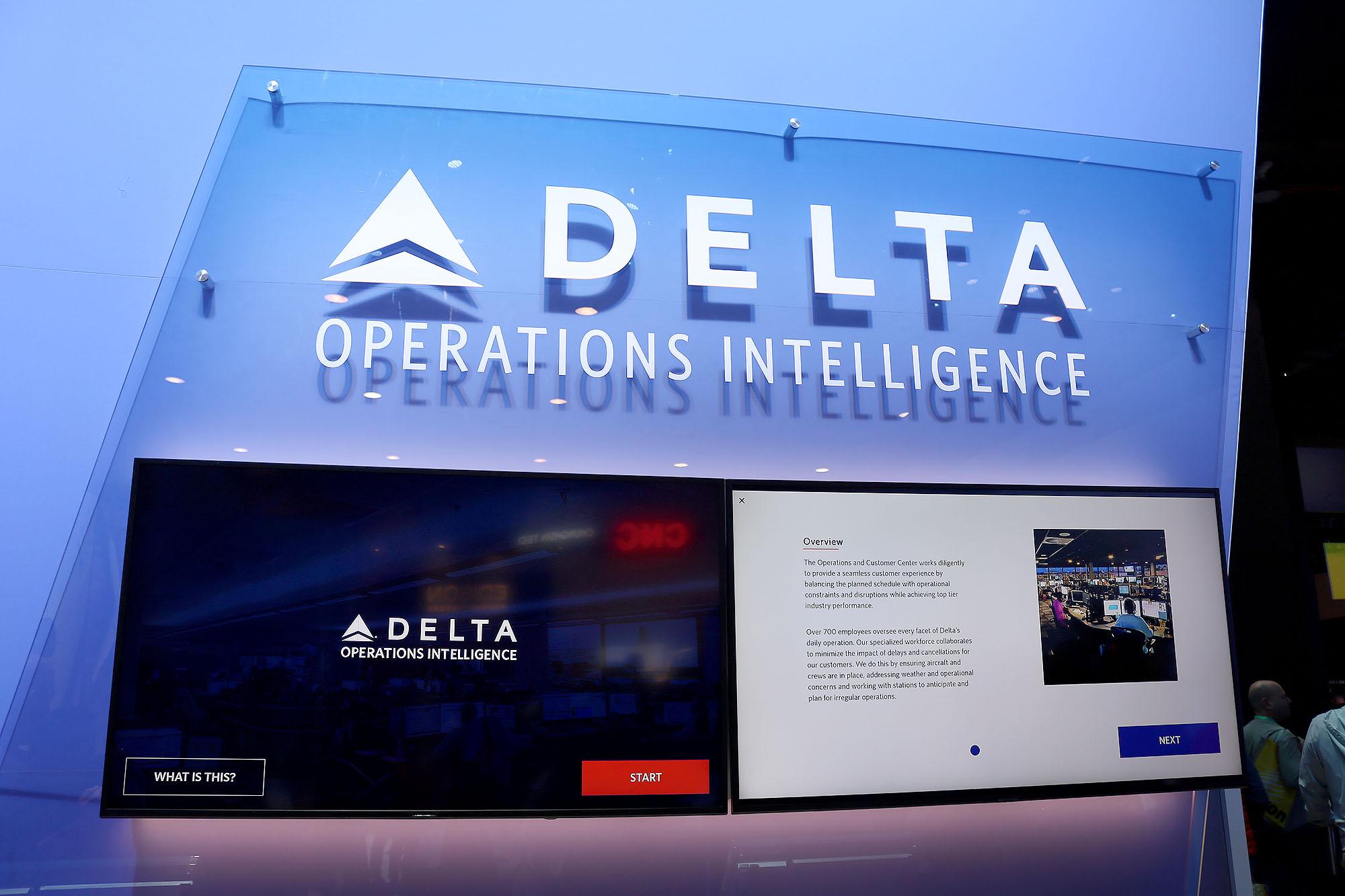
Delta Air Lines
Credit: Lindsay Bjerregaard/Aviation Week
Arguably one of the stars of this year’s show, Delta Air Lines showcased a number of futuristic new technologies it is implementing within its operations and customer experience segments. Its Operations Intelligence Platform uses artificial intelligence and machine learning to play out different scenarios for how various factors might impact performance and customer experience. The platform, which will be used by the carrier’s Operations Customer Center, is set to roll out in late spring or early summer 2020.
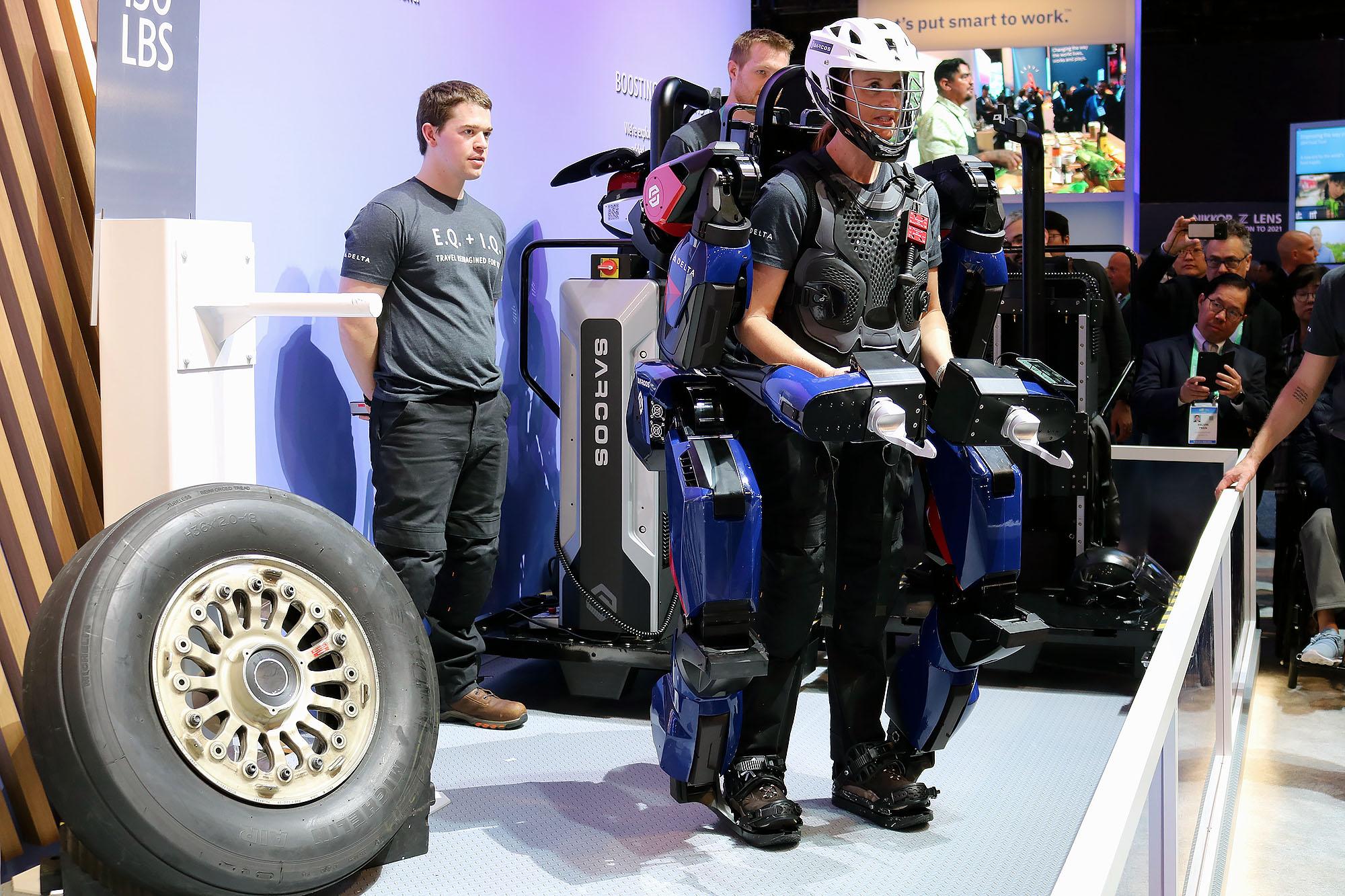
Delta Air Lines
Credit: Lindsay Bjerregaard/Aviation Week
The carrier has partnered with Sarcos Robotics to implement its powered industrial exoskeletons, which were also on display at the booth. Delta is working on use cases within maintenance and operations to help employees become “superhumans,” such as easier ability to lift heavy luggage or aircraft and engine components.
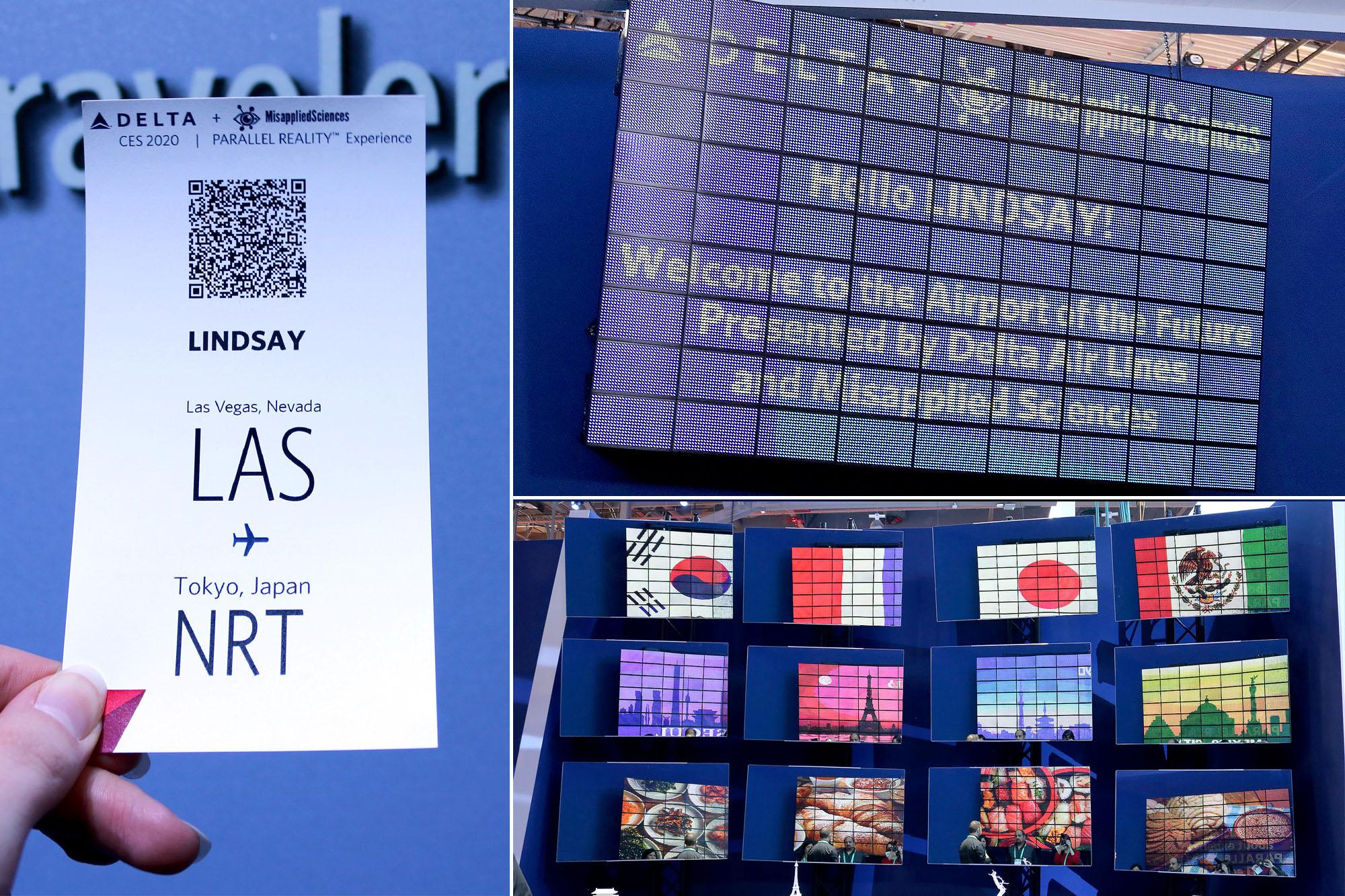
Delta Air Lines
Credit: Lindsay Bjerregaard/Aviation Week
Finally, Delta debuted a new display technology called Parallel Reality created by startup Misapplied Sciences, which enables up to thousands of people to see unique content on one screen at the same time. Delta plans to bring the first commercial application of Parallel Reality to Detroit Metropolitan Airport in summer 2020, where passengers will be able to see displays with personalized information about their flight and gate in their preferred language after scanning their boarding pass.
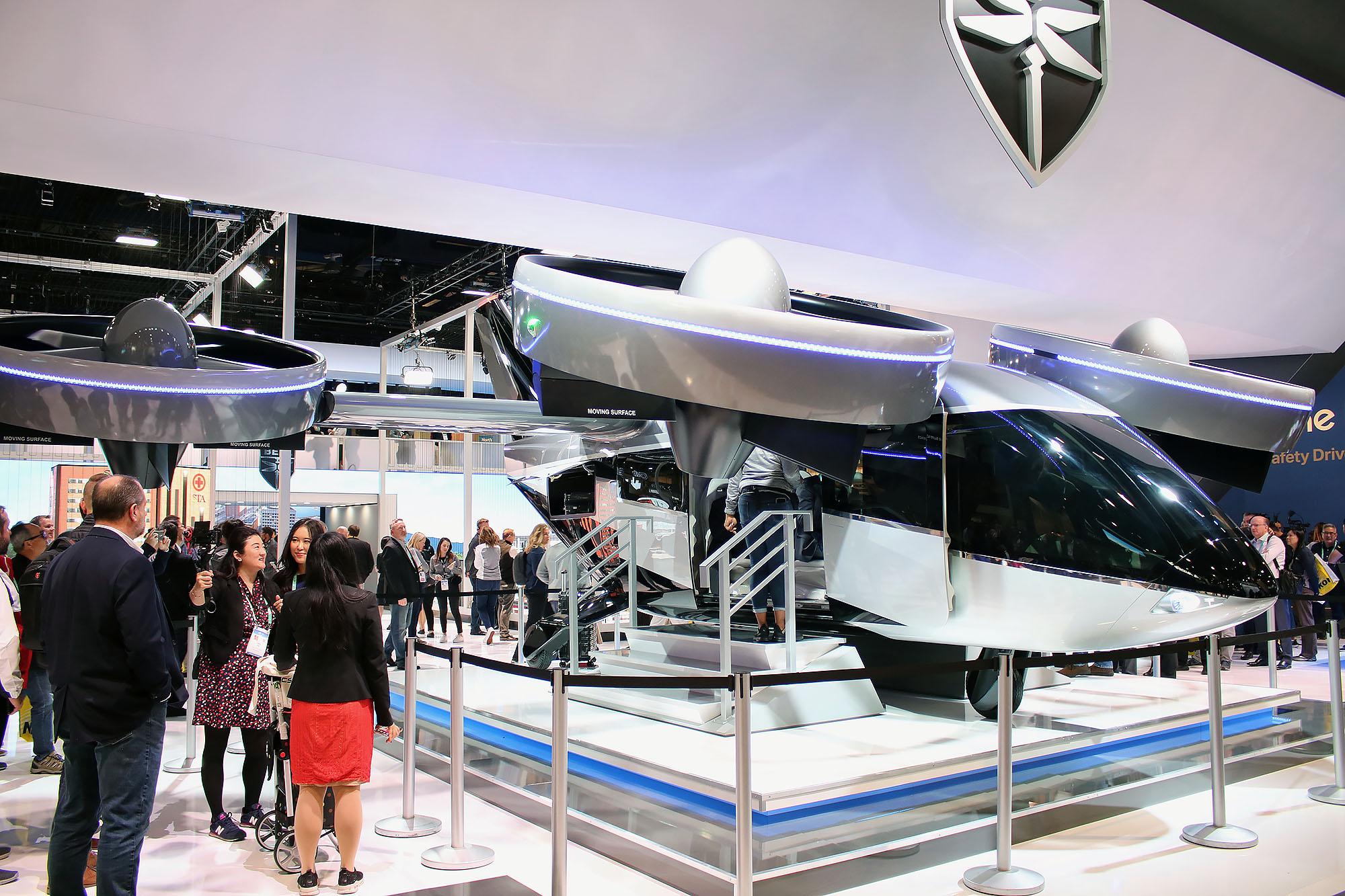
Bell Nexus 4EX
Credit: Lindsay Bjerregaard/Aviation Week
Undergoing a makeover at this year’s CES was Bell’s updated Nexus eVTOL concept—now called the Nexus 4EX. The revised design features four ducted fans instead of the six on last year’s prototype, which Bell says will improve cruise efficiency to maximize range using batteries only. Also reduced is the vehicle’s range, which fell from 150 mi. to 60 mi. According to Bell, the design changes were driven by the need to increase cruise efficiency to enable all-electric flight.
Also on display at Bell’s booth was AerOS, its proprietary system for managing fleet information, aircraft health and predictive data and maintenance. According to Bell, the cloud-based system will also offer services such as passenger booking, flight scheduling, route optimization and airspace management.
Also on display at Bell’s booth was AerOS, its proprietary system for managing fleet information, aircraft health and predictive data and maintenance. According to Bell, the cloud-based system will also offer services such as passenger booking, flight scheduling, route optimization and airspace management.
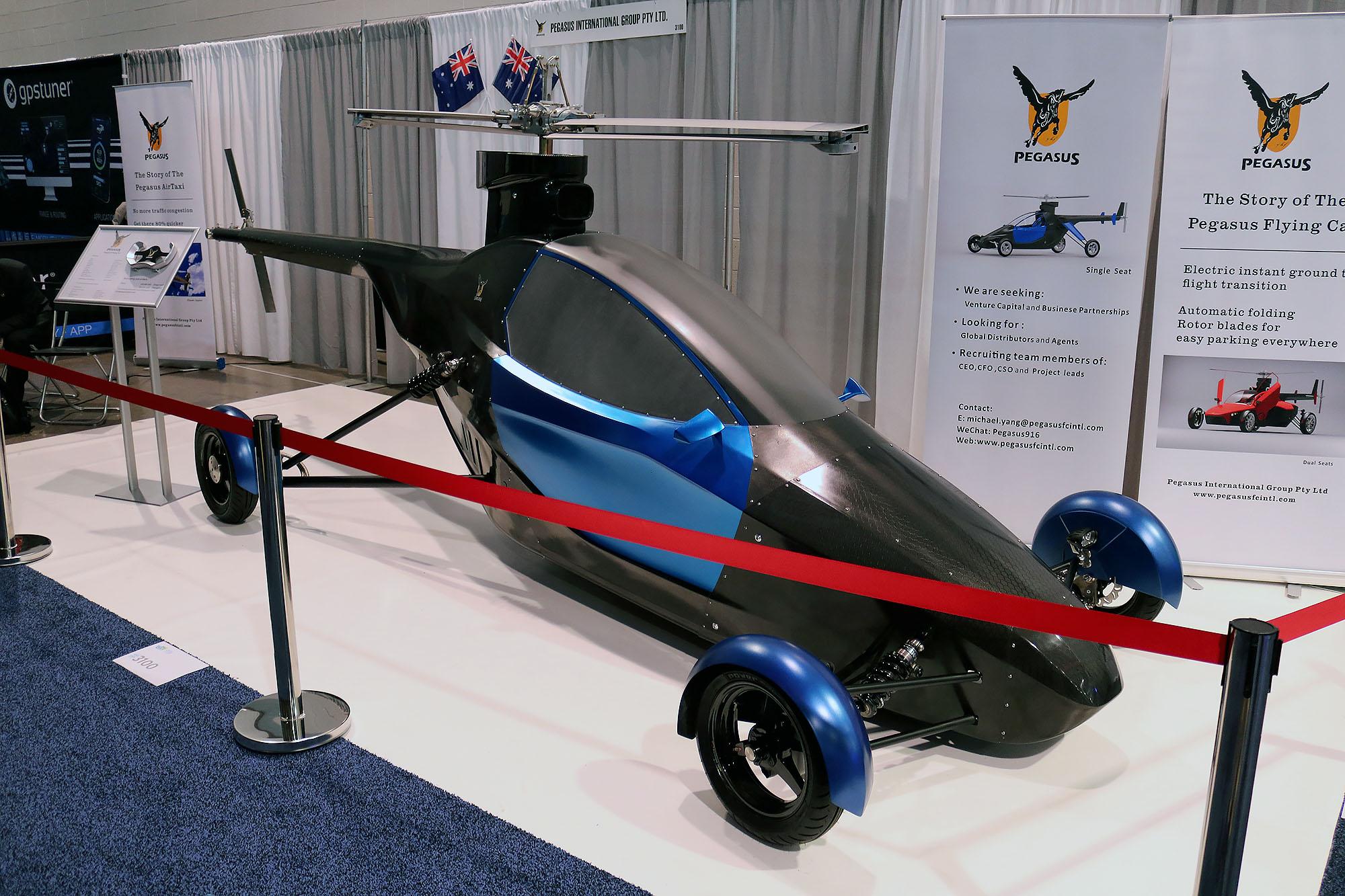
Pegasus Flying Car
Credit: Lindsay Bjerregaard/Aviation Week
While flying taxis got a lot of attention at CES this year, Pegasus International introduced a flying vehicle concept intended for individual ownership and use. According to Pegasus, its Flying Car is the only flying car in the world capable of vertical takeoff and landing and “could fly right to your garage.” The vehicle is gas-powered with a range of 370 mi. and Pegasus says it can switch between driving and flying modes in six seconds with the touch of a button, its rotor blades automatically folding for easy parking. Pegasus exhibited a single seat version at CES, but says it is developing an 11-seat version, which it is seeking funding to complete.
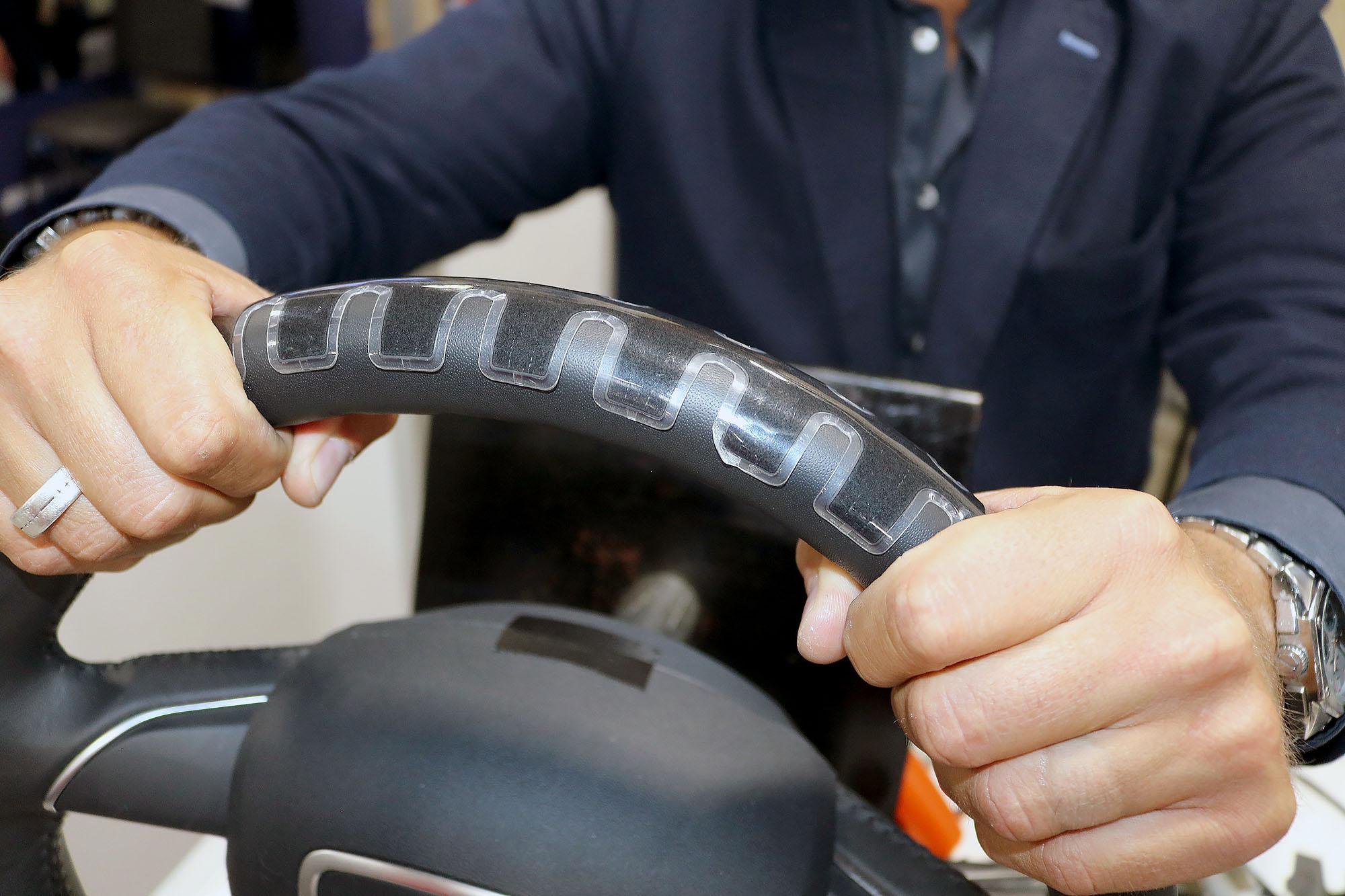
CurveSYS
Credit: Lindsay Bjerregaard/Aviation Week
A winner of the German version of Shark Tank, CurveSYS consists of flexible sensor technology and software with applications across a wide variety of industries, including aviation. According to CurveSYS, the flexible sensors—which can curve and flex over different surface types—can be used within aviation for applications such as monitoring whether aircraft seats are occupied. The sensors are being used to monitor driver fatigue in the automotive industry, and the startup says they could also be used to detect drowsiness symptoms of pilots. CurveSYS says it is looking to transition into the aviation market and it is talking with major airlines and aircraft OEMs.
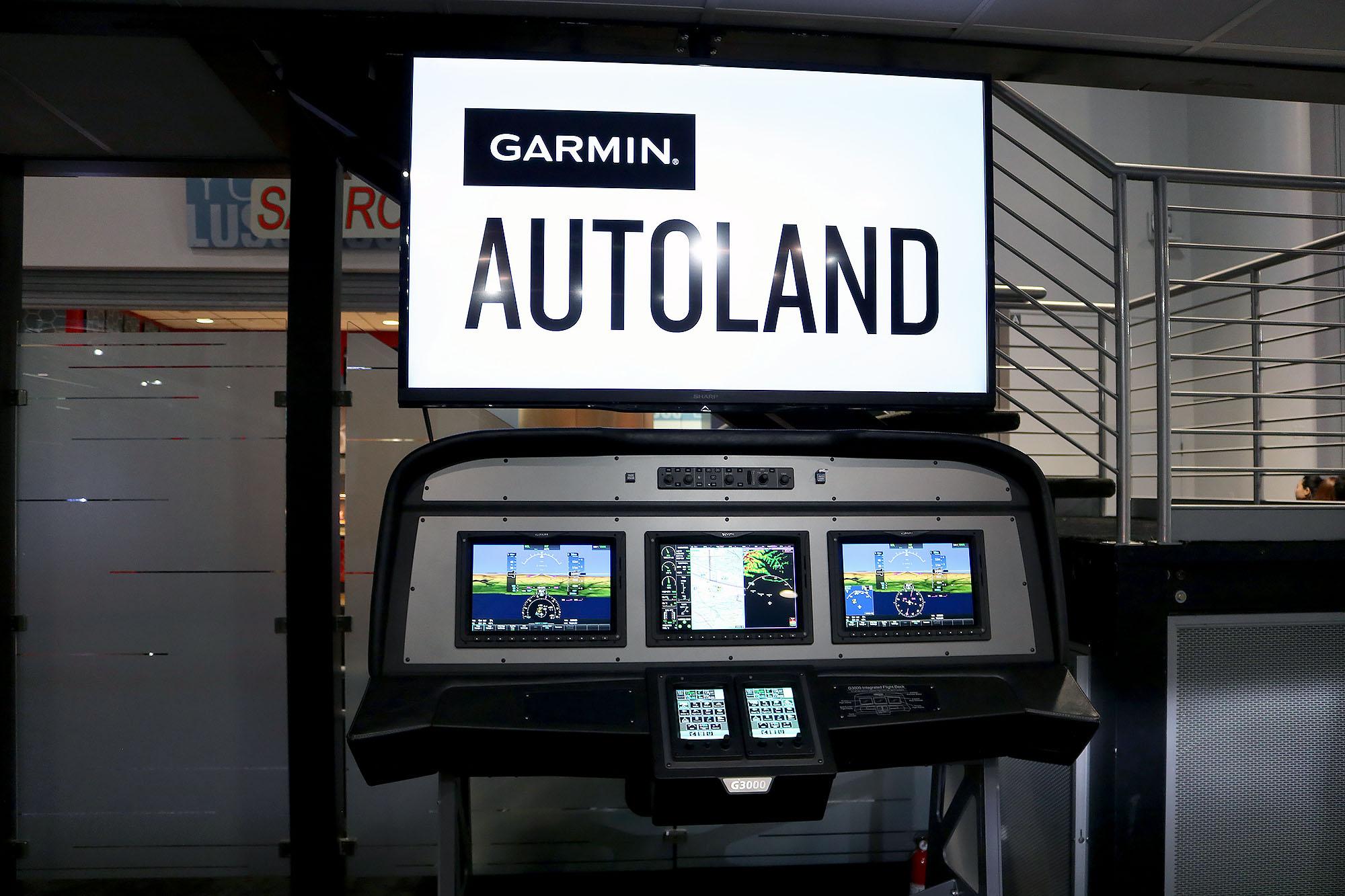
Garmin Autoland
Credit: Lindsay Bjerregaard/Aviation Week
Introduced in fall 2019, Garmin exhibited its Autoland system, which it says is the first implementation of emergency self-landing technology for general aviation. If the pilot becomes incapacitated, the system enables any passenger in the aircraft to initiate an emergency autolanding with the push of a button, which then directs the aircraft to the nearest suitable runway for emergency self-landing. The feature is OEM-installed on Piper and Cirrus aircraft, and Garmin says there is potential for a retrofit option in the future. Garmin plans to release the system in summer 2020.

AeroNext Flying Gondola
Credit: Lindsay Bjerregaard/Aviation Week
Japanese startup AeroNext debuted a concept model of its Flying Gondola VTOL, which features both rotary and fixed wings, as well as the company’s proprietary 4D Gravity drone center of gravity control technology. AeroNext says the vehicle’s center of gravity technology will provide smoother transition between takeoff and horizontal flight while also incorporating autonomous navigation. The concept introduced at CES carries a single passenger, but AeroNext says it will announce a multi-passenger version in the future. The company is planning to create a full-scale version, which it aims to operate in limited conditions—such as in the form of a “futuristic ferris wheel”—in the next three years. AeroNext hopes the Flying Gondola will be used for urban air mobility scenarios in approximately 10 years.
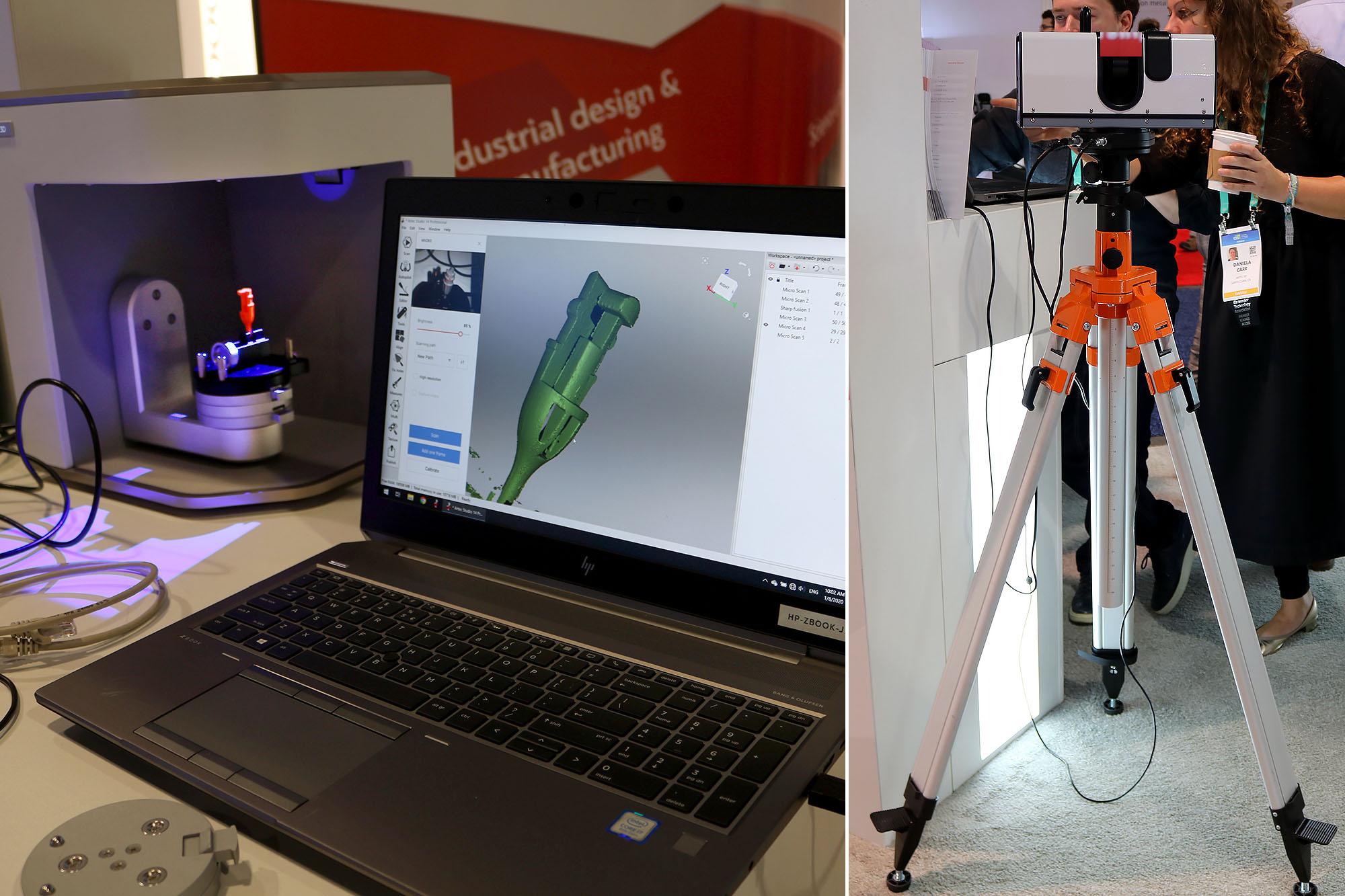
Artec 3D
Credit: Lindsay Bjerregaard/Aviation Week
On display at Artec 3D’s booth were two of its newest 3D scanners, the Artec Micro and Artec Ray. Artec Micro, which was released in summer 2019, can scan tiny objects such as small machine parts with up to 10 microns of accuracy. The Artec Ray, released near the end of 2019, is used for scanning of much larger objects, such as big aircraft parts or entire aircraft. Mounted on a tripod, the Ray uses lidar technology to scan large objects at up to 360 deg. at a distance of up to 110 m. (360 ft.) with sub-millimeter accuracy. According to Artec, its 3D scanners are being used within aviation for parts inspection and reverse engineering, including one client that has implemented scanners for aircraft Wi-Fi installation projects.
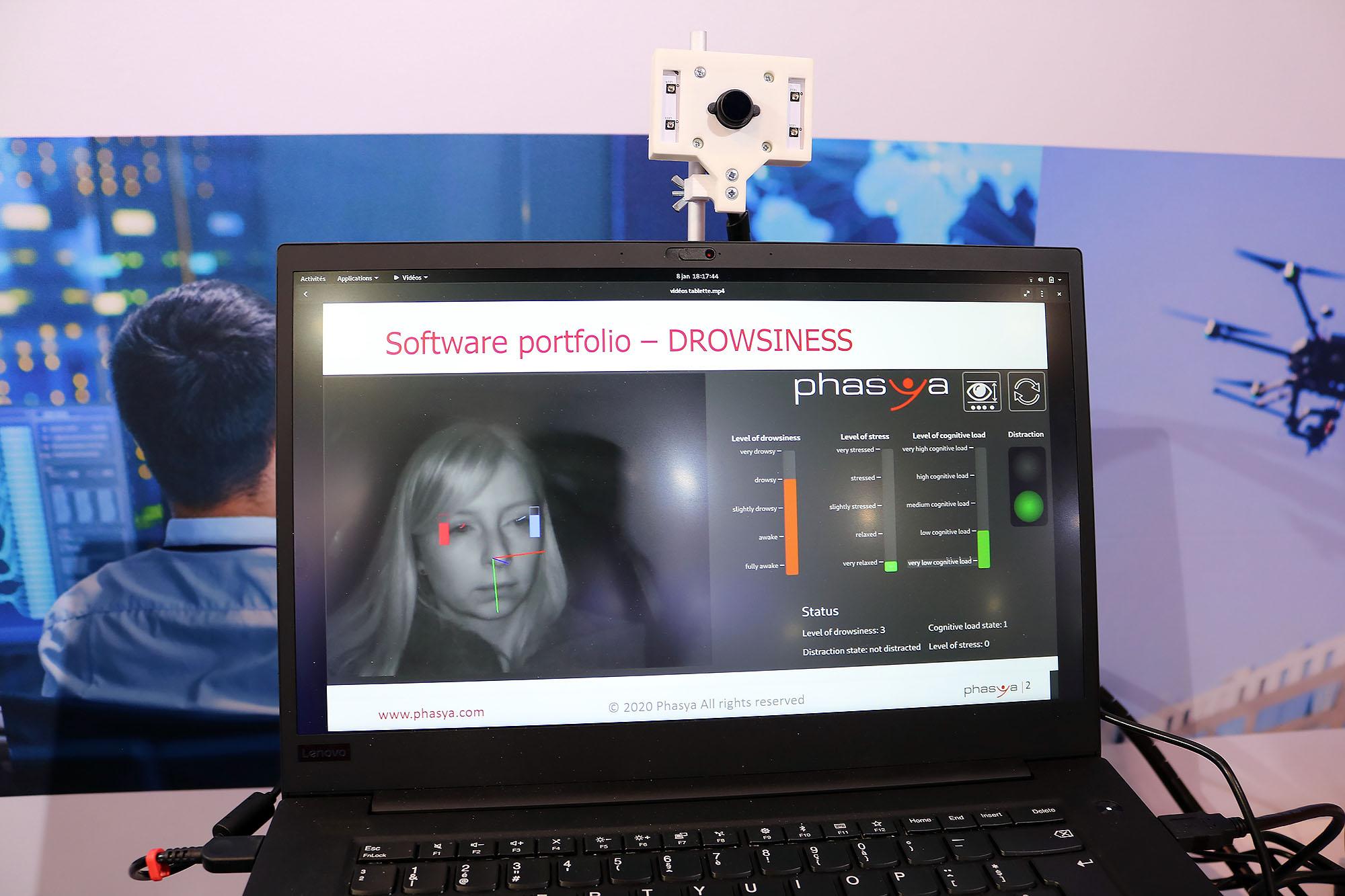
Phasya
Credit: Lindsay Bjerregaard/Aviation Week
Started as a university research project in Belgium, Phasya is software developed to monitor physiological and cognitive states that impact human performance, such as drowsiness and fatigue. The software interfaces with any kind of device that has sensors to provide ocular and heart rate data, such as cameras, smart watches and seat sensors. Although Phasya’s main focus to date has been the automotive industry, it is looking to expand into aviation. The company has a collaboration with Austrian Airlines, which tested the technology in September for monitoring pilot drowsiness via glasses outfitted with a high-speed camera. Phasya is also collaborating with fatigue risk management specialist Welbees to integrate its software with existing aircraft fatigue risk management systems.
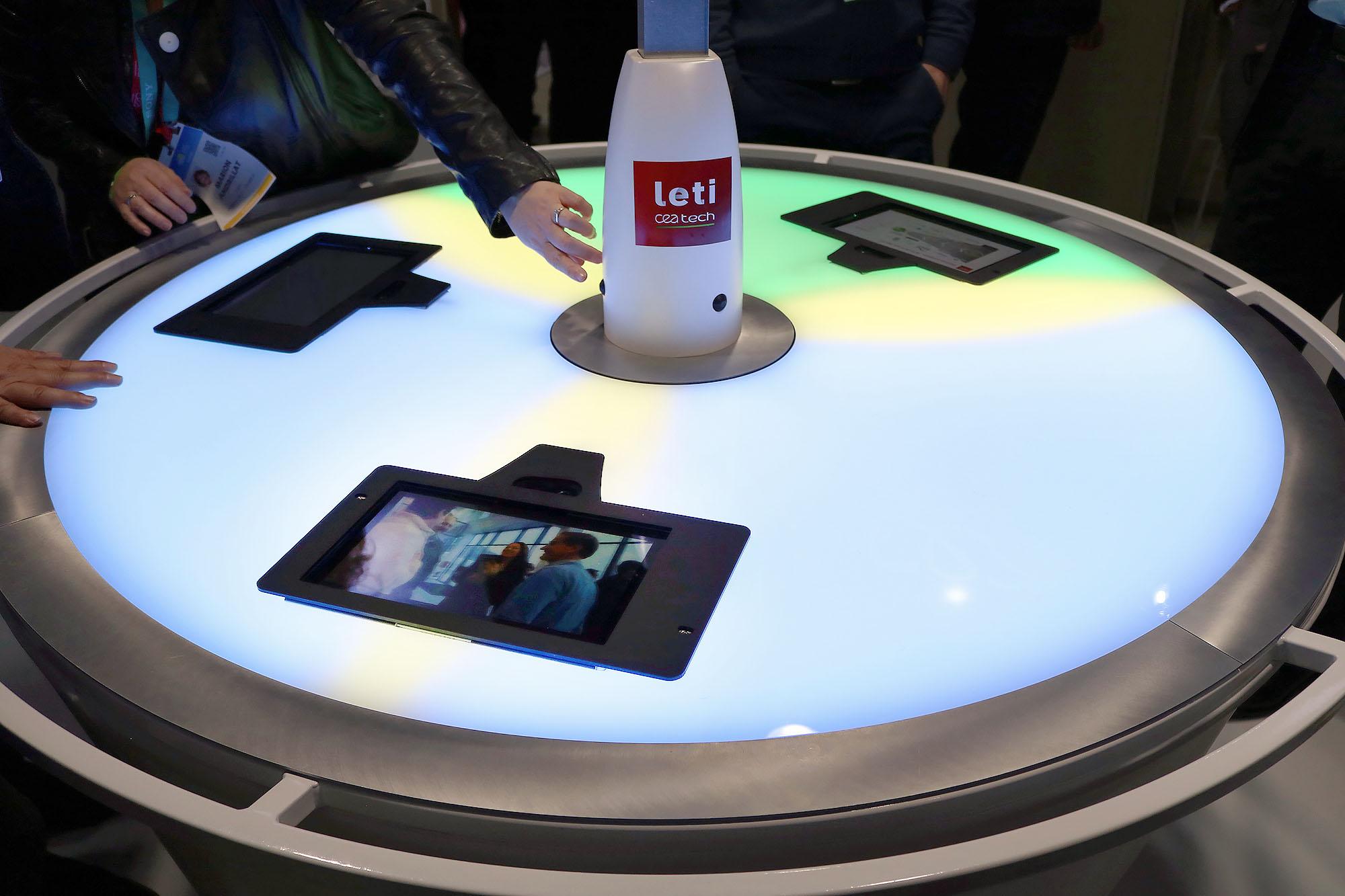
CEA LiFi Multicell
Credit: Lindsay Bjerregaard/Aviation Week
French research, development and innovation organization CEA showcased a number of concepts with potential aviation use cases. The first, called LiFi Multicell, seeks to eliminate potential interference issues with light-based Li-Fi communications—which it believes needs to be addressed before Li-Fi can become successful commercially. The system uses software and a USB-based attachment for tablets and laptops to designate which Li-Fi source is meant to link with which device. According to CEA, the system would prevent multiple Li-Fi sources in close quarters (such as those on aircraft) from interfering with each other.
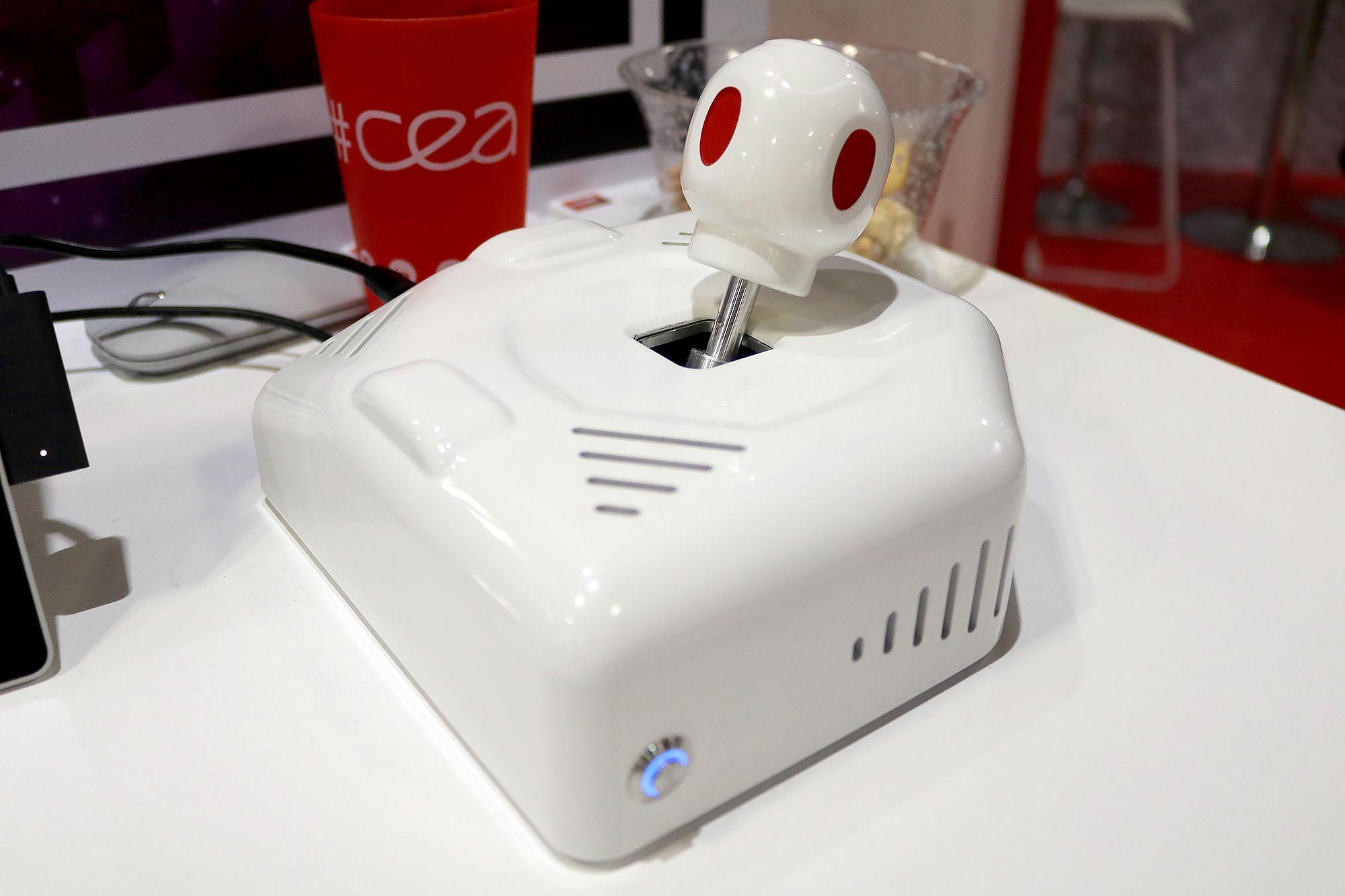
CEA Maxens
Credit: Lindsay Bjerregaard/Aviation Week
The second project, called Maxens, is a multifunctional haptic controller that uses magnetorheological fluid to maximize haptic sensations for operator assistance systems in vehicles and aircraft—such as controls in an aircraft cockpit. According to CEA, Maxens can transmit haptic feedback that is not currently available in aviation. The system has been tested within tractors and cars, but CEA is looking to move into the aviation segment and believes Maxens could also be used in control rooms for monitoring future urban air mobility.
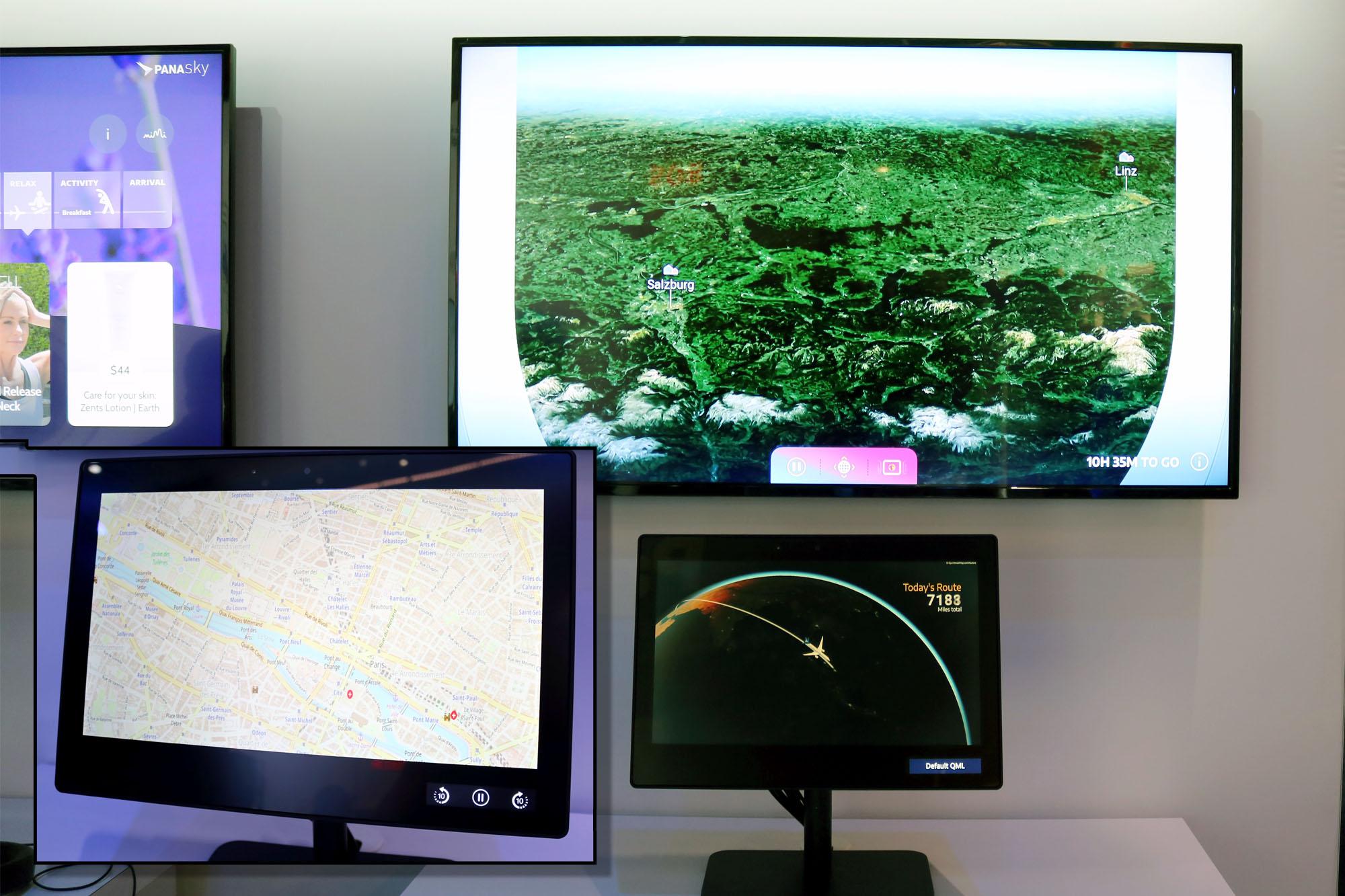
Panasonic Avionics
Credit: Lindsay Bjerregaard/Aviation Week
Panasonic Avionics showcased a variety of its inflight entertainment innovations, which have recently transitioned from a hardware focus to the software space. The first product, in development, is Panasonic’s Arc inflight moving map. The 3D map product is designed as a “geo gateway” that can be customized by airlines to give customers access to detailed information about their destination, trip planning functionality and the option of conducting live transactions on-screen, such as booking arrangements at their destination. The map, which has been optimized for 4K, also has built-in street level maps that customers can zoom in to using touch screen gesturing.
The system currently only works with Panasonic’s IFE systems, but the company says it will explore other options in the future. Arc will launch in June 2020 with Vistara on both short and long-haul flights, and Panasonic says it will be announcing more customers throughout the year.
The system currently only works with Panasonic’s IFE systems, but the company says it will explore other options in the future. Arc will launch in June 2020 with Vistara on both short and long-haul flights, and Panasonic says it will be announcing more customers throughout the year.
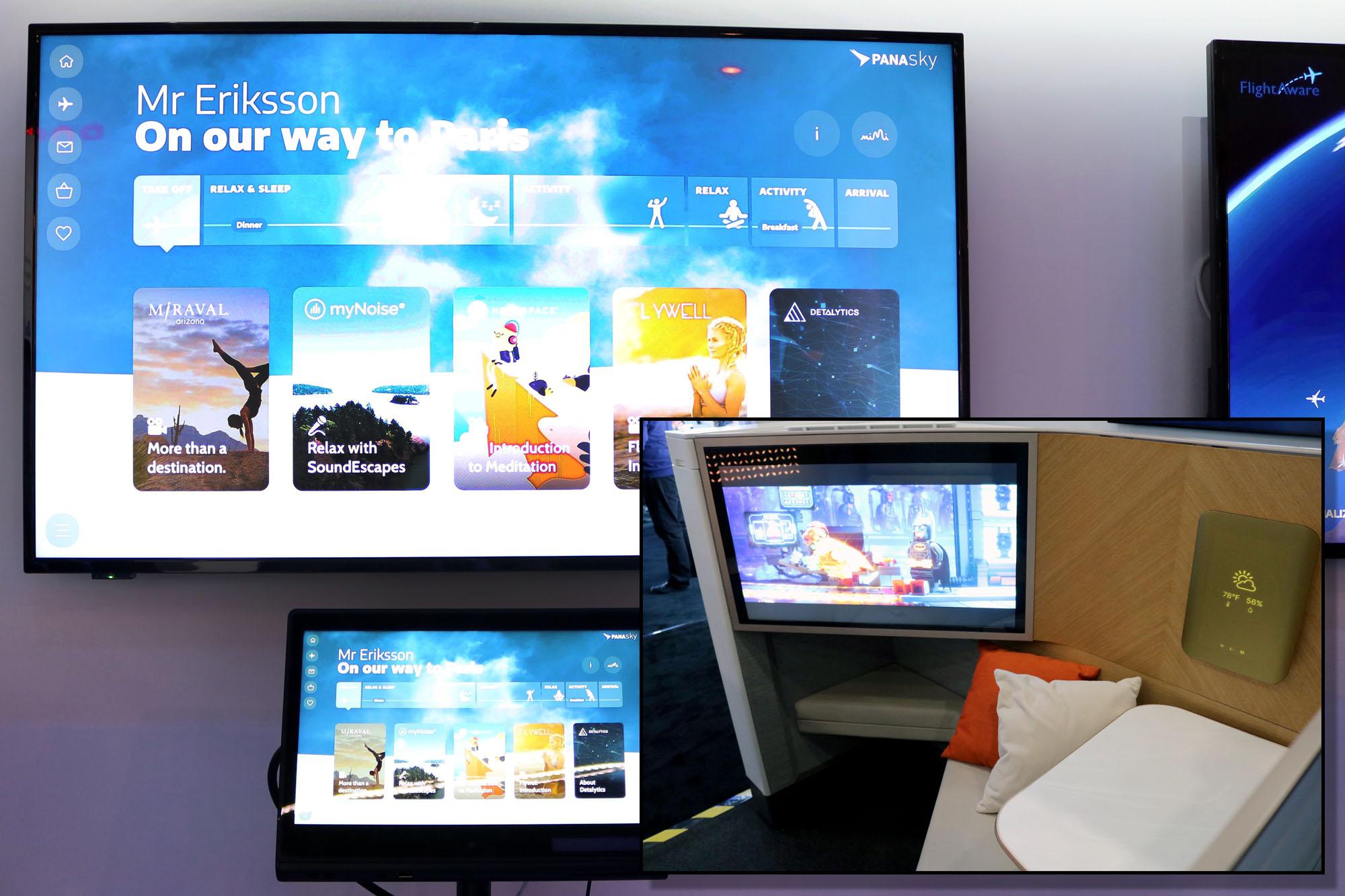
Panasonic Avionics
Credit: Lindsay Bjerregaard/Aviation Week
To complement the Wellness Suite it introduced at CES last year, Panasonic displayed a Digital Wellness application for seatback screens aimed at helping passengers feel their best during and after flights. Through a partnership with Detalytics, Panasonic has created functionality on the app to generate customized flight schedules for passengers that will provide active recommendations about sleep, light, caffeine and food intake, movement and more. Panasonic is engaged in discussions with airlines during this development phase and says it may plan to incorporate the app with Wellness Suite technology such as lighting and noise cancellation when the product launches by the end of 2020.
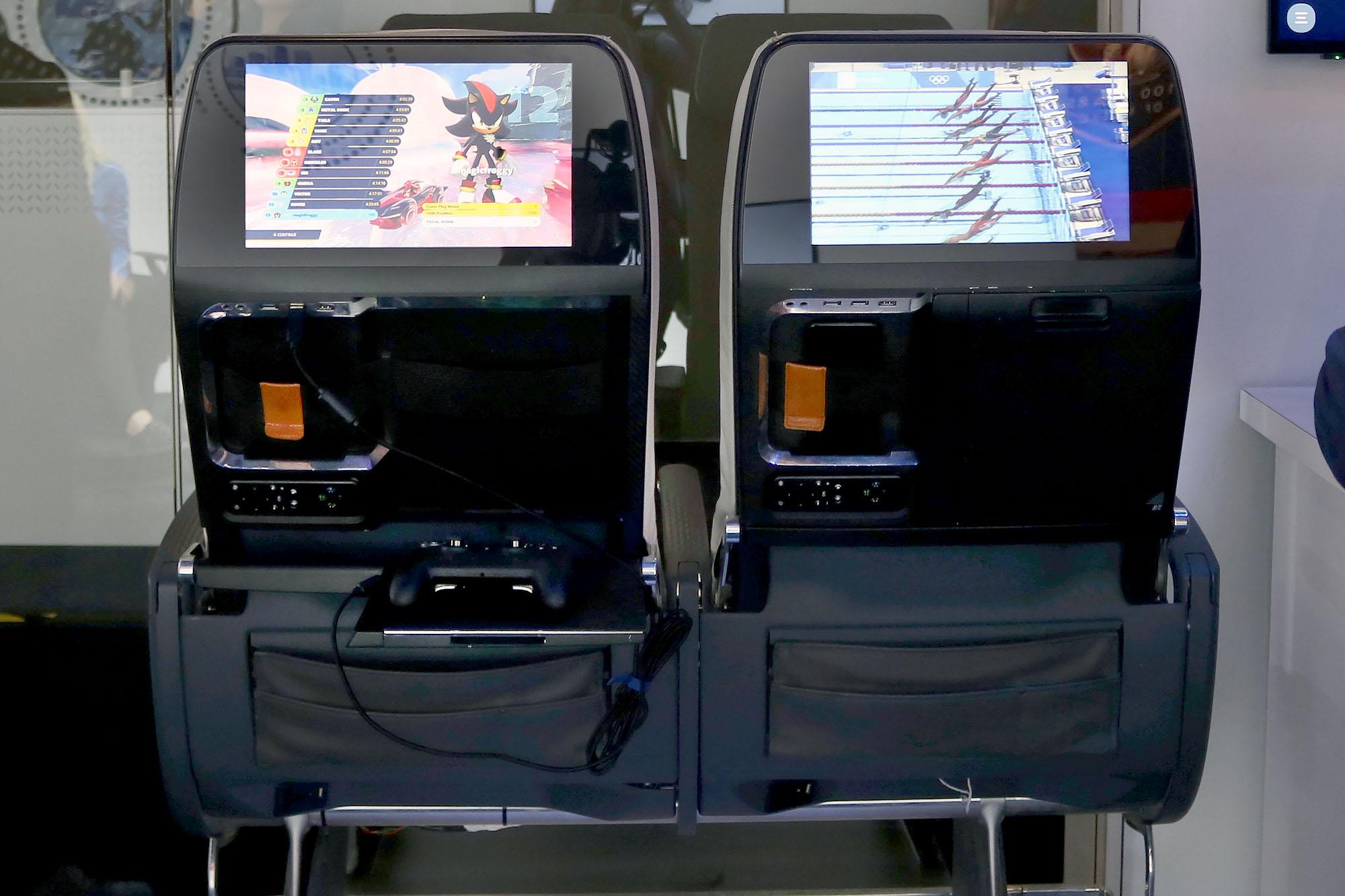
Panasonic Avionics
Credit: Lindsay Bjerregaard/Aviation Week
Based on research indicating that travelers are interested in gaming technology during flights, Panasonic is investigating bringing console-level gaming to every seat that would allow passengers to bring their own controller and connect it to IFE using a USB connection. Panasonic is working to figure out how to securely open data for USB inputs on seatback IFE and is also investigating complementary technology such as casting.
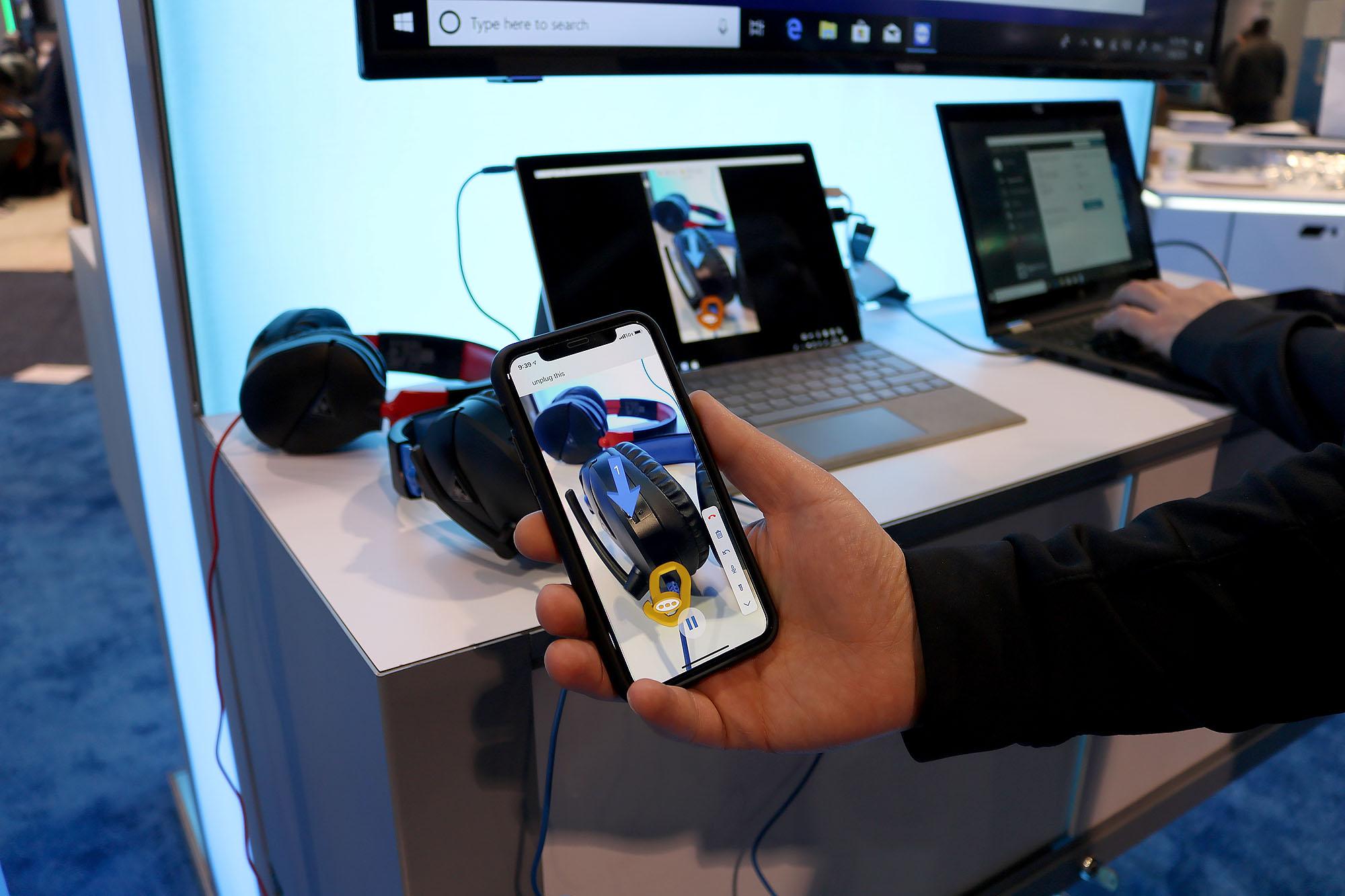
TeamViewer Pilot
Credit: Lindsay Bjerregaard/Aviation Week
TeamViewer exhibited its TeamViewer Pilot augmented reality software platform for remote collaboration and assistance. Targeted at incident response scenarios, the software can be deployed in a variety of industrial use cases including aviation maintenance. TeamViewer Pilot works with smart phones and smart glasses, and it is already supported by smart glasses from RealWear, Epson and Vuzix. TeamViewer says it is looking into Microsoft HoloLens integration this year. The software includes functionality for 3D annotations and text on screen, taking screenshots and transferring files. The company is hoping to break into the aviation industry and plans to attend one of Aviation Week Network’s MRO shows (www.aviationweek.com) this year.
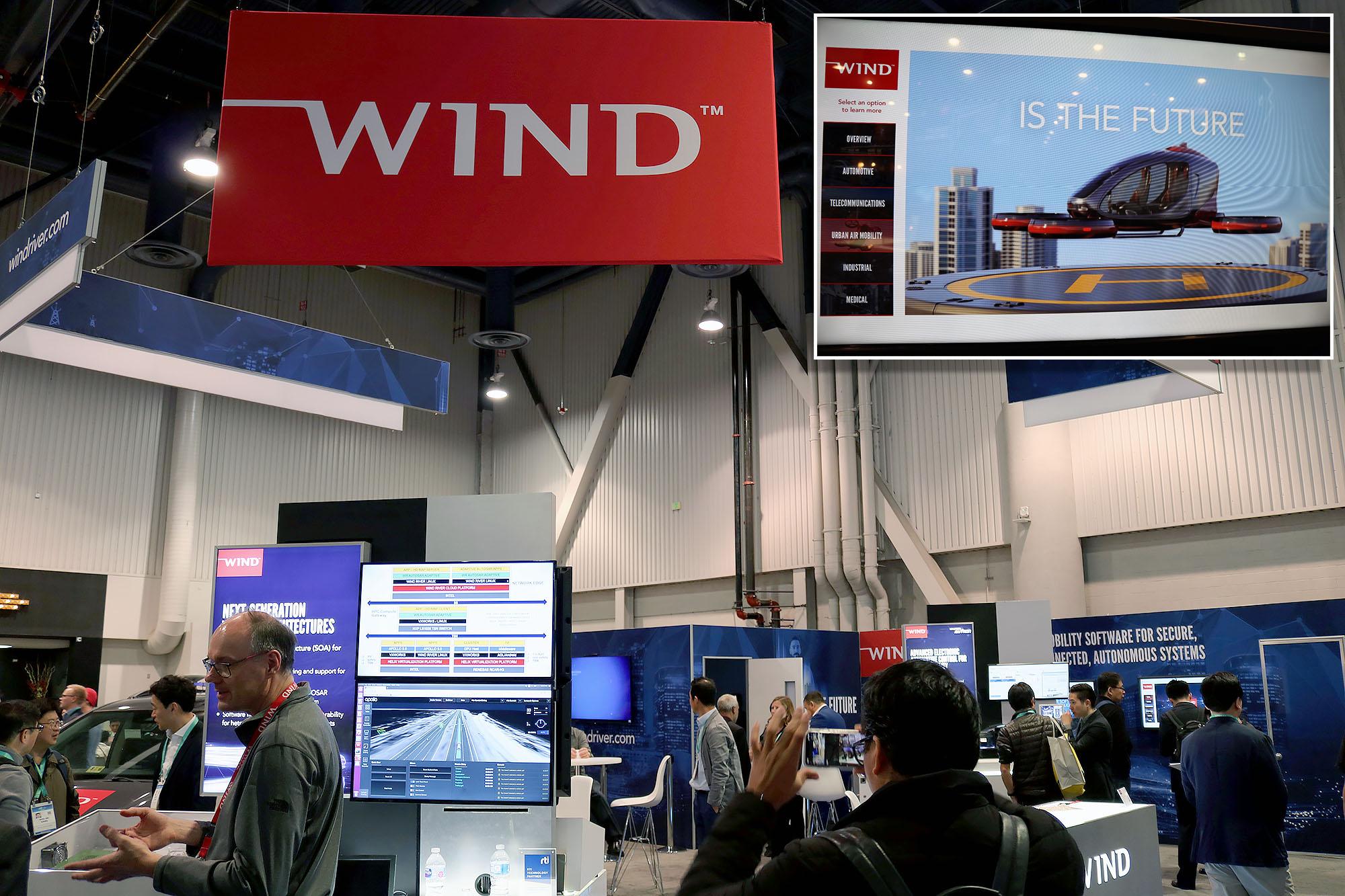
Wind River
Credit: Lindsay Bjerregaard/Aviation Week
Software specialist Wind River showcased its VxWorks 653 real-time operating system for avionics, which it says enables avionics vendors to safely deploy integrated applications on a shared hardware platform while maintaining system conformance and safety standards. The product is already used within conventional aerospace applications, but Wind River is now working on applications for vehicle automation and control for urban air mobility use cases and the company says it is already working with mobility providers showcasing at CES this year.
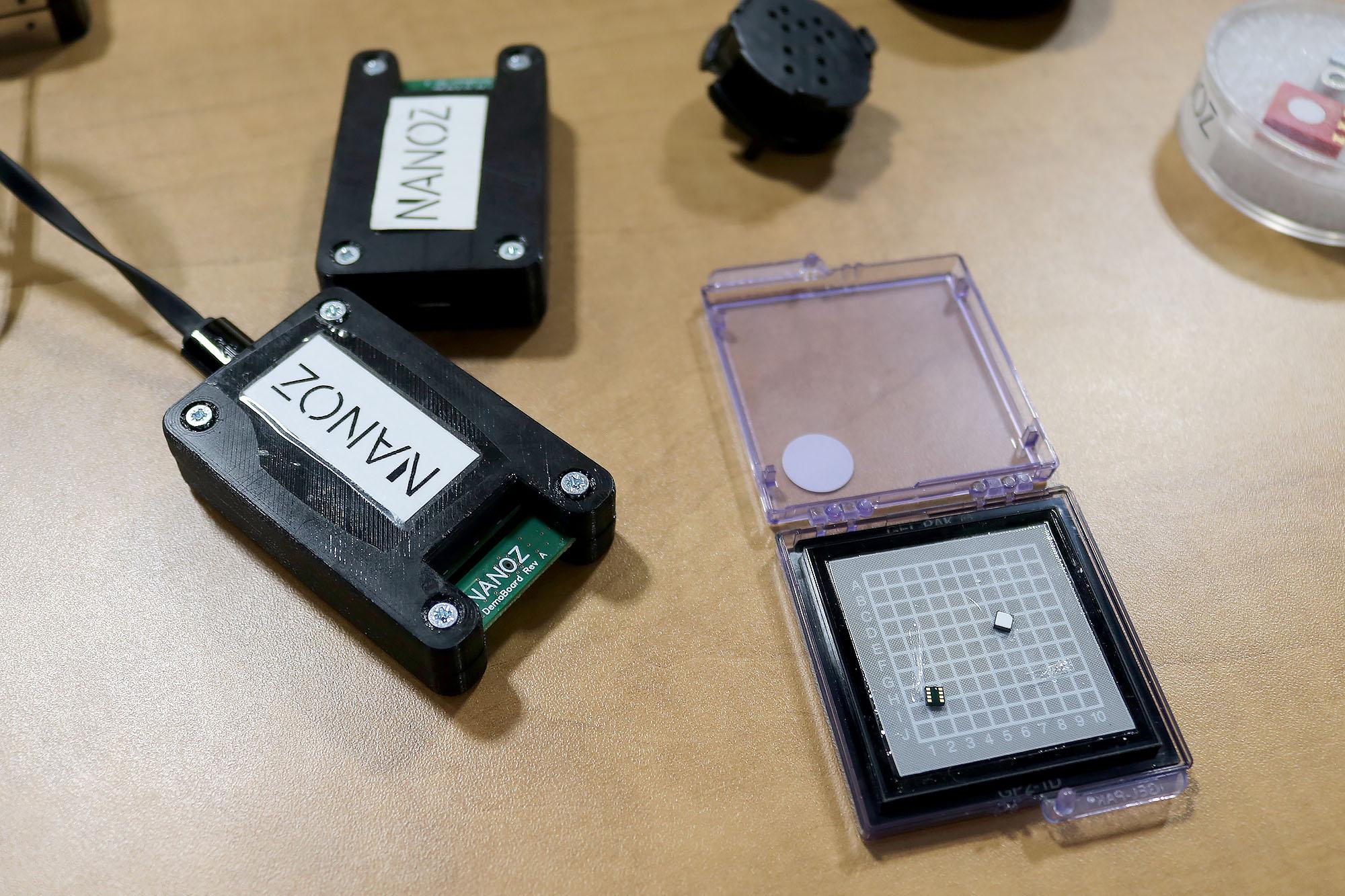
Nanoz
Credit: Lindsay Bjerregaard/Aviation Week
French startup Nanoz has created what it calls the smallest selective gas sensor on the market, which can be used to measure air quality in aircraft. In addition to air quality measurement, Nanoz says its sensors can be used within aviation to detect electrical arcs for predictive maintenance purposes, as well as to test a pilot’s blood alcohol level before flights. The company is hoping to break into the aviation industry and has been in discussions with companies like Airbus.
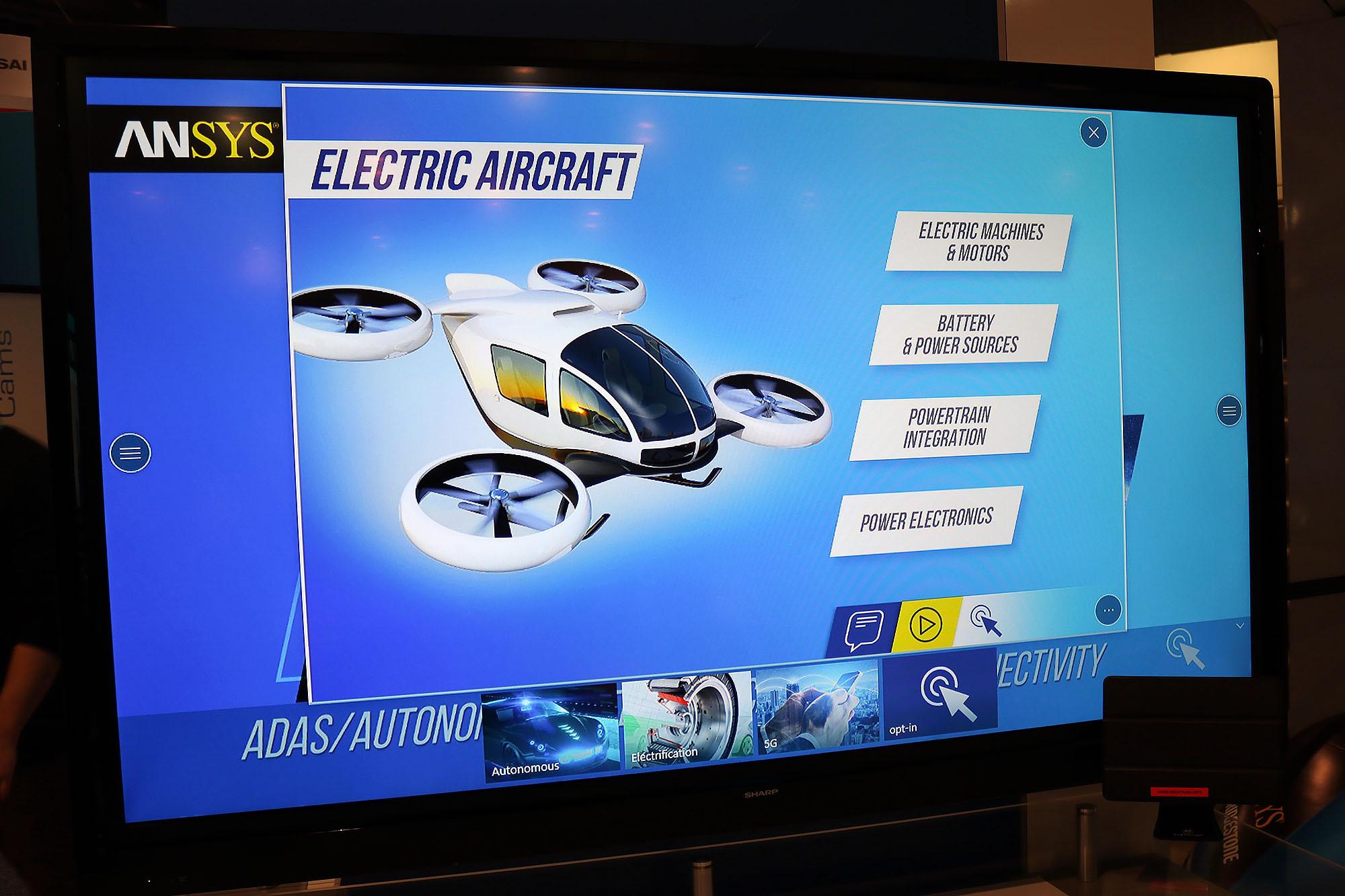
ANSYS
Credit: Lindsay Bjerregaard/Aviation Week
As a provider of engineering simulation software for future mobility factors such as autonomous flight, electrification and 5G, ANSYS was right at home at CES’ North Hall amongst a number of aviation and automotive OEMs. According to ANSYS, it helps customers complete system level integration of these technologies through providing a physics and technological foundation to “help push companies to the next step.” Although the company’s customers at CES are confidential, it has worked with aviation customers such as Airbus, Electroflight and Turbotech.
From urban air mobility vehicles and futuristic tools to innovative software and sensors, here is some of the coolest new aerospace tech from CES 2020.